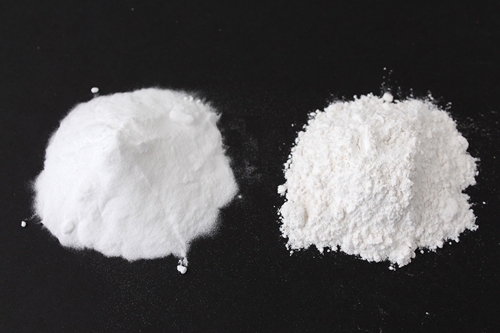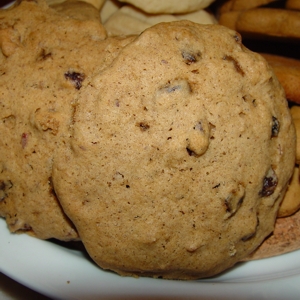The author/editor of a major food info website cited a post of mine in an article on one of his sites this past week. I was honoured that he found verity and wisdom in my words. And, while clicking around his site, I came across a topic that I felt I really have to delve into more deeply…
 Baking Soda (left) vs. Baking Powder (right. Soda is pure Sodium Bicarbonate.
Baking Soda (left) vs. Baking Powder (right. Soda is pure Sodium Bicarbonate.
Powder is a mixture of Soda and a dry acid. Soda looks granular.
Baking Powder looks Floury.
Randall Oulton is editor/author of healthycanning,com, a companion site to cooksinfo.com, the largest, most extensive encyclopaedia on food on the internet. I highly recommend it. I really like its ‘advanced search’ feature and the ‘Random Learning’ featurettes that punctuate the posts on ingredients, recipes and techniques.
Which brings me to today’s post…
So… I was clicking around, more or less at random, to get a feel for the site when I cane across a post on making English Muffins. I’m going to try Randall’s method soon. I haven’t yet found a recipe/technique for English Muffins that works properly for me. And I have a picky, though adorable, British mom to please, when it comes to dishes from Over ‘Ome…
Attached to this post was a Random Learning piece on Baking Powder. It’s an almost-universal ingredient in baking and, yet, we tend to take it for granted. But few cooks really understand what it is and how it works. And that knowledge really comes in handy when developing new recipes or adjusting them for substituted ingredients.
What it is and what it does…
Baking Powder is a blend of baking Soda and a dry acid – usually Citric Acid or Cream of Tartar. When you add a liquid, the two chemicals dissolve and react spontaneously with each other to form carbon dioxide bubbles. These bubbles expand under the influence of oven heat in your Cake, Cookie and Quick Bread recipes to make them rise. Sounds simple, right?
You’ve heard it said that Baking is more science than art. To be precise, it’s more chemistry than any other branch of science, and the Baking Powder story is a prime example of why that’s so.
Using the equation…
Why do we have to be careful about how much Baking Powder we use? Too little will give a flat, dense result and too much will give an over-inflated, dry result. Too much acid in your recipe will also leave a bitter taste in your mouth while too much alkali will result in a soapy taste. Either way, you’re making the Cake again.
So, it’s vital to get the ratios correct!
How do we calculate how much Baking Powder to add to a recipe? The basic formula for a Cake is: Per 1 cup Flour (I prefer Cake and Pastry over AP), use 1 level tsp. of Baking Powder. Some say 1.25 tsp. But that gets us into the next consideration.
Bending the equation…
Baking Powder gets its leavening power from the reaction between an acid and an alkali. What if your other cake ingredients are more acid or more alkali than plain Flour? Now’s the time to adjust the leavening to complement the mix. Add some Baking Soda to compensate for the acid in a recipe such as Molasses Cookies, or in recipes that use Buttermilk, Sour Cream, Citrus Juice or Honey. Add some acid when you want to give the Baking Powder/Soda some help.
I have several recipes using Oatmeal that call for Baking Soda alone as a leavener. How does it get its acid for the reaction? Dark Brown Sugar is usually specified in this sort of recipe. And, because it is a slightly more refined cousin of Molasses, it has a certain amount of acid of its own. Be aware of ‘hidden’ acids and alkalis!
Rule: If a tried and tested recipe says to use a certain amount of Baking Powder and/or Soda, or to add acid in the form of Cream of Tartar or Citrus Juice, don’t change it! The author of the recipe has laboured long getting it just right, to suit the other ingredients.
Final words…
When using chemical leaveners, like Baking Powder and Baking Coda, less is more. Too much of either will ruin tour cake or cookies even if you has the ratio right. At worst, a little too little will probably result in a slightly denser, moister Cake.
It ain’t brain science or rocket surgery, but it definitely is chemistry!
~ Maggie J.

